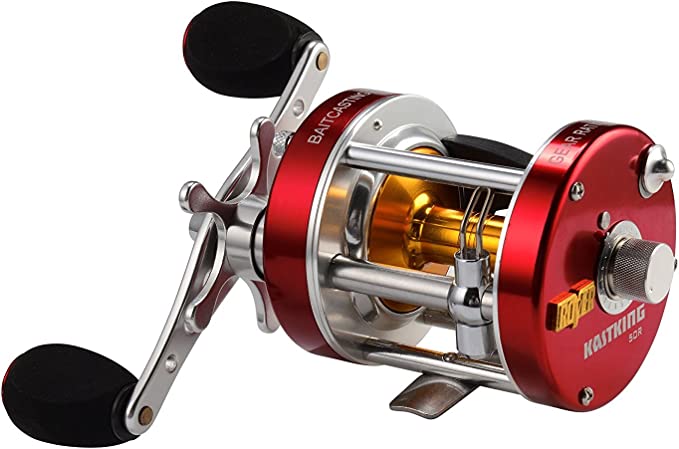Deli-mate DM527-02: Elevate Your Culinary Experience, Indoors and Out
Update on Sept. 5, 2025, 7:01 p.m.
The kitchen, for many, is a place of comfort and creation. But beneath the clatter of pans and the sizzle of oil, it’s a dynamic laboratory of physics, chemistry, and materials science. We often take our appliances for granted, yet each one is a carefully engineered tool that puts fundamental scientific principles to work. The gas cooktop, with its instant and adjustable flame, is a prime example of this quiet innovation. Rather than simply listing its features, let’s use a modern model—like the Deli-mate DM527-02—as a case study to explore the fascinating science that makes great cooking possible.

The Language of Heat: Demystifying the BTU
At its core, a gas stove’s power is measured in BTUs, or British Thermal Units. While the term might sound antiquated, its meaning is pure physics: one BTU is the energy required to raise the temperature of one pound of water by one degree Fahrenheit. In the kitchen, a higher BTU rating equates directly to a faster, more powerful application of heat.
This isn’t about brute force; it’s about control. A well-designed cooktop is a symphony of burners, each tuned to a different thermal frequency. The DM527-02 illustrates this perfectly with its array of five burners, from a powerful $11,262$ BTU centerpiece to a delicate $3,413$ BTU auxiliary burner. That central burner isn’t just for boiling water in a flash. For the enthusiast, it’s the key to achieving “wok hei,” the highly prized, smoky essence of Cantonese stir-frying. This flavor isn’t just a result of a cooking technique; it’s a chemical reaction. The high, concentrated heat vaporizes a small amount of oil, which then combusts in the air above the wok, imparting that signature aroma. This requires an enormous, sustained thermal output that only a high-BTU burner can provide.
Conversely, the low-BTU burner is an exercise in restraint. Its small flame and minimal heat output are ideal for gentle tasks that require precision, like melting chocolate without scorching it or keeping a delicate sauce at a warm, steady temperature without breaking its emulsion. Each flame size serves a purpose, turning a simple kitchen appliance into a versatile instrument for thermal manipulation.

The Foundation: A Study in Materials
A cooktop’s performance isn’t just about the flame; it’s about the materials that interact with it. The DM527-02 features a surface made from 304 stainless steel, a remarkable alloy that is more than just a shiny finish. Stainless steel, in a stroke of metallurgical genius, contains a significant amount of chromium (typically 18% in this grade). When exposed to oxygen, the chromium atoms react to form an ultra-thin, invisible layer of chromium oxide. This layer, a process known as passivation, acts as a self-healing armor, protecting the steel from rust and corrosion, even when exposed to acids from food like tomatoes or lemons. This resistance to oxidation is why stainless steel remains a staple in professional and home kitchens alike.
Complementing this resilient surface are heavy-duty cast iron grates. While stainless steel handles heat and hygiene, cast iron excels at a different task: thermal stability. Cast iron has a high specific heat capacity, meaning it can absorb and store a tremendous amount of thermal energy. Think of it as a heat battery. Once it’s hot, it holds onto that heat, providing a stable, uniform base for your cookware. This thermal inertia prevents hot spots and cold zones, ensuring consistent heat transfer to the base of your pan. This is especially crucial for a large wok or a heavy pot, preventing wobbling and maintaining steady cooking temperatures.

A Tale of Two Fuels: The Chemistry of Combustion
One of the most practical features of a modern gas stove is its ability to operate on different fuel sources. The DM527-02 is a dual-fuel appliance, pre-configured for natural gas (NG) but convertible to liquid propane (LPG). This adaptability is a neat piece of engineering that hinges on a core chemical difference between the two fuels.
Natural gas is predominantly methane ($CH_4$), a light hydrocarbon with a simple molecular structure. Liquid propane, on the other hand, is propane ($C_3H_8$), a heavier, more energy-dense molecule. Because of their different chemical compositions, they require different amounts of oxygen for complete combustion. This is why a gas cooktop needs a specific orifice—the small nozzle that the gas flows through—and a calibrated regulator for each fuel type. A propane orifice is smaller to control the flow of the more pressurized gas, ensuring it mixes with the right amount of air to burn efficiently and safely. A user review on this very model highlights this: when using it for an outdoor kitchen, one cook discovered the stock regulator didn’t provide the necessary pressure for an adequate flame, a problem they solved by replacing it with a higher-pressure regulator calibrated for propane. This isn’t a flaw; it’s a textbook example of adjusting an apparatus to suit the chemical properties of a different fuel.

The Sentinel Flame: Engineering for Safety
In the symphony of a gas stove, safety is a non-negotiable rhythm. The DM527-02, like many modern appliances, is equipped with a flame failure safety device, a silent guardian that works on a fundamental principle of physics: the Seebeck effect.
Within the burner is a small component called a thermocouple, typically made of two different metal conductors joined at a point. When this junction is heated by a flame, it generates a tiny electrical voltage. This voltage is used to keep an electromagnetic valve open, allowing gas to flow. If the flame is accidentally extinguished—say, by a gust of wind or a pot overflowing—the thermocouple cools down instantly. The voltage disappears, the electromagnetic valve closes, and the gas flow is cut off, preventing a potentially dangerous leak. This simple, elegant piece of engineering is a testament to how meticulous design and basic physics principles combine to create a secure environment in the home.
The modern gas cooktop is far more than a simple burner. It’s a tool that brings together the principles of thermodynamics, materials science, combustion chemistry, and safety engineering into one seamless, intuitive package. By appreciating the science behind a piece of equipment like the Deli-mate DM527-02, you don’t just learn how to cook; you learn how to better understand the world around you, one perfect sear at a time.

























